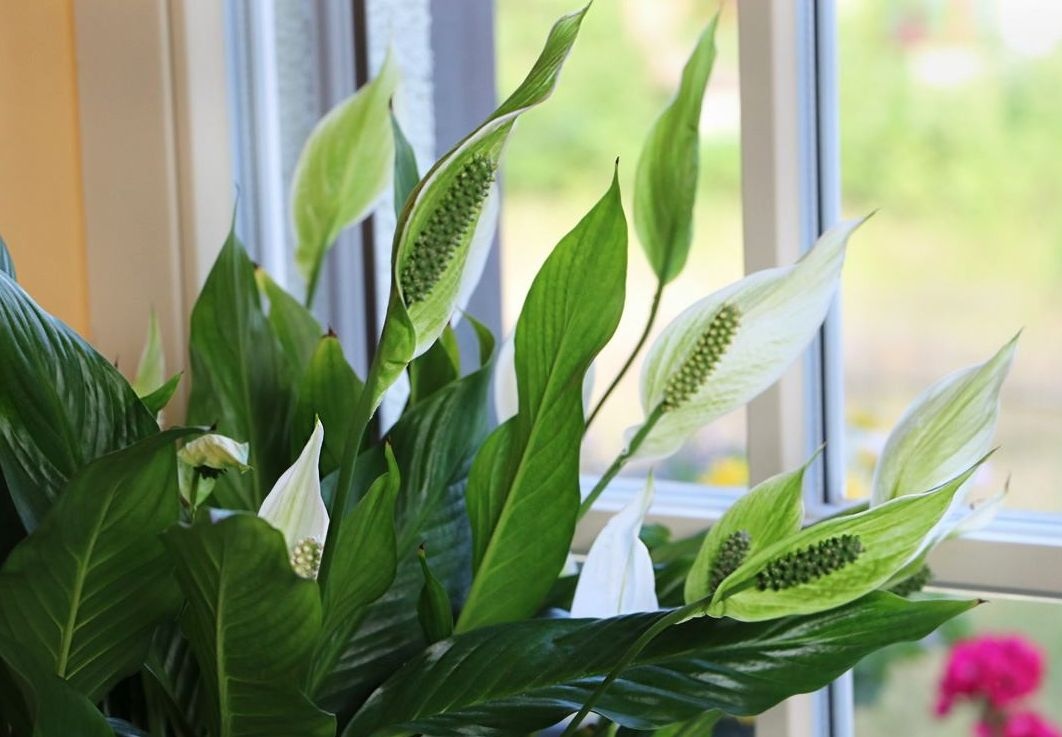Myrtle is a cute, scented tree that can be grown at home along with other houseplants. Caring for this tree is not entirely easy, but also not as difficult as it might seem.
The myrtle tree, the photo of which you can see in the article, attracts with its unusual appearance and pleasant aroma. It will be discussed below.
Content
Description of the myrtle tree
A houseplant such as myrtle looks great both as an independent flower and in composition with other home flowers. It is believed that myrtle has a beneficial effect on the nervous system.... This flower at home fulfills not only an aesthetic function, because its leaves and cuttings can be used as seasonings for various dishes.
In many countries, the myrtle tree is considered the embodiment of moral purity, love and loyalty. These traditions known since biblical times and are still relevant... For example, in some cultures, a flower of peace given at a wedding is considered a symbol of good marriage and well-being.
Under natural conditions, the myrtle flower grows in the Mediterranean in a subtropical climate. In the photo you can see what this plant looks like:
- the leaves are small and shiny, have an elongated shape;
- flowers of white and pink color contain essential oils;
- myrtle fruits are nuts or dark blue drupes.
Plant application
The attractiveness of the plant made it a welcome guest as a room color that fits into any style of kitchen or room. but aesthetic side - far from the only purpose of myrtle.
Also, myrtle is applied as follows:
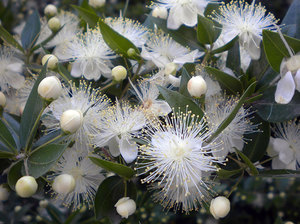 essential oils contain phytoncides, which are able to cleanse the air of bacteria and viruses. With their help, a microclimate is created in the room that protects against colds, increases efficiency and stress resistance;
essential oils contain phytoncides, which are able to cleanse the air of bacteria and viruses. With their help, a microclimate is created in the room that protects against colds, increases efficiency and stress resistance;- the healing properties of the world treat allergic manifestations;
- an infusion based on flowers and leaves of a plant can be used as a cosmetic substance for skin health;
- As mentioned earlier, dried fruits and leaves of the myrtle tree are added to dishes as a spice. The well-known clove belongs to the myrtle seasonings.
Famous varieties of myrtle
The plant has a huge number of species and varieties, which differ from each other in the following parameters:
- color;
- the shape of the leaves;
- fruit color;
- the height of the tree.
The most attractive varieties are:
- Flore Pleno, with double flowers;
- Tarentina Variegata;
- Variegata;
- Microfilla Tarentina, distinguished by its small size;
- La Clape;
- La Clape Blanc.
However, despite the large number of varieties of this flower, common myrtle remains the most popular as a houseplant, the intricacies of caring for which will be discussed below.
Myrtle: home care
 You can see photos of these home-grown plants both in the article and on the Internet.And so that they have such an attractive appearance, you need to follow the rules of care behind them in room conditions.
You can see photos of these home-grown plants both in the article and on the Internet.And so that they have such an attractive appearance, you need to follow the rules of care behind them in room conditions.
Remember that myrtle is a subtropical plant, therefore, it needs high humidity, which can be provided by regular spraying. For watering and spraying myrtle, settled soft water is used. It is not necessary to specially soften it for these purposes, but the lime in the soil of the flower can harm it.
The composition of the soil should preferably be close to natural. The proportions of the substrate for myrtle should be something like this:
- 30 percent turf;
- 30 percent peat soil;
- 20 percent river or sifted sand;
- 20 percent humus.
You can use greenhouse soil or ready-made soil mix.
Even a short-term drying out of the soil is dangerous for the world, the plant can turn yellow and wither. When the soil dries up, the flower in the pot is immersed in water. but there should be no stagnation of water in the flower container either.
To feed the plant, use special complex formulations for flowering indoor plants.
Myrtle loves to be outdoors, and he is not afraid of drafts. therefore at home it can be kept in places such as a kitchen window sill or balcony... Thus, phytoncides that improve the atmosphere of the room will be released even more actively.
The optimal place for myrtle indoors is a south-lit window. You can keep the plant in another place, but it will be comfortable to bloom here.
The peculiarities of caring for myrtle also depend on the season. We'll talk about this in more detail below.
Features of summer plant care
At home, from spring to autumn inclusive, myrtle needs moderate temperature conditions, the optimal indicator is about 23 degrees... It is better to keep the plant in a lighted place, but at the same time it needs to be shaded from the heat using curtains or special screens.
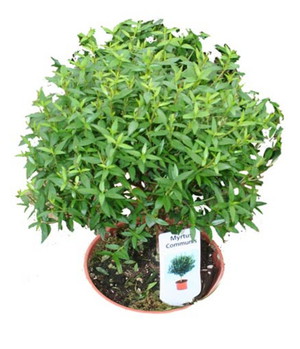 If possible, transfer the world to a balcony or veranda where there is more air. If he stays for the summer in room conditions, the room needs to be ventilated regularly.
If possible, transfer the world to a balcony or veranda where there is more air. If he stays for the summer in room conditions, the room needs to be ventilated regularly.
Watering during the warm season should be regular, but not plentiful. You need to feed the plant once a week. In the spring, the myrtle is pruned and transplanted. The transplant should be performed a maximum of once every two years.
Winter care for myrtle
Winter for this flower is a dormant period. Watering should be moderate, but the soil should not be overdried. One watering per week will be sufficient. Spray the plant only needed when it is located in a warm room. Top dressing is carried out every 4–5 weeks.
For the winter, the world needs to be moved to a bright and cool place and kept at a temperature of about 10 degrees. If the flower will shed its leaves, so he is hot. Do not be sad if it loses a lot of leaves, because in the spring it will again restore its splendor.
How to prune myrtle
The plant treats this procedure well, so it is advisable to give the desired shape to its crown. It is advisable to leave side shoots at the same time, since the barrel is not very strong... However, pruning and pinching is not always beneficial in bud formation.
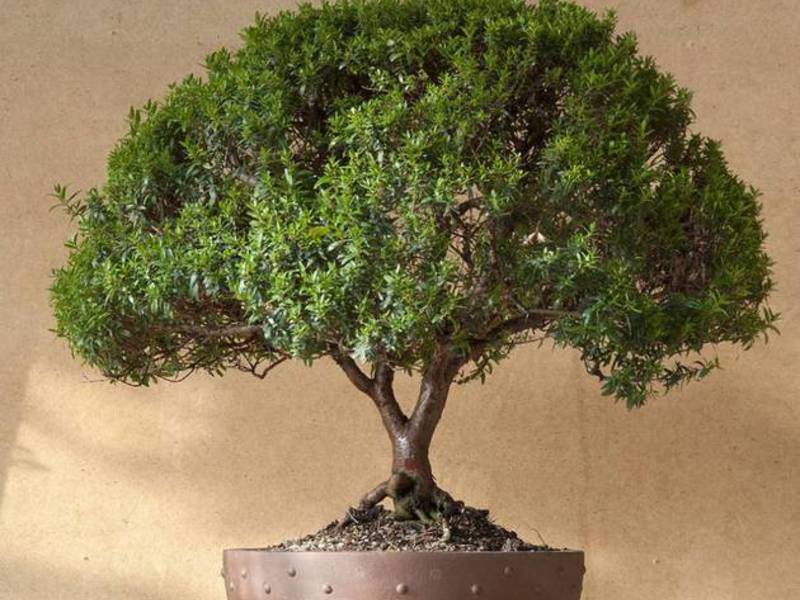
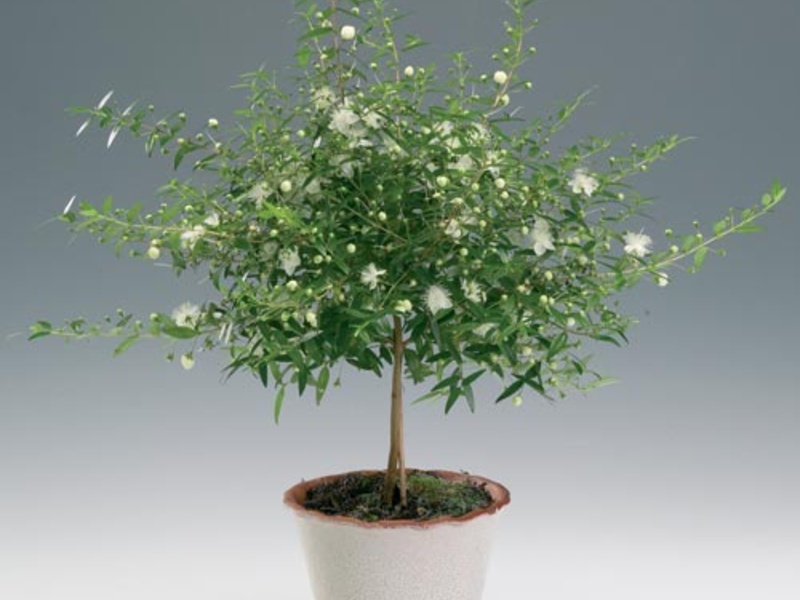
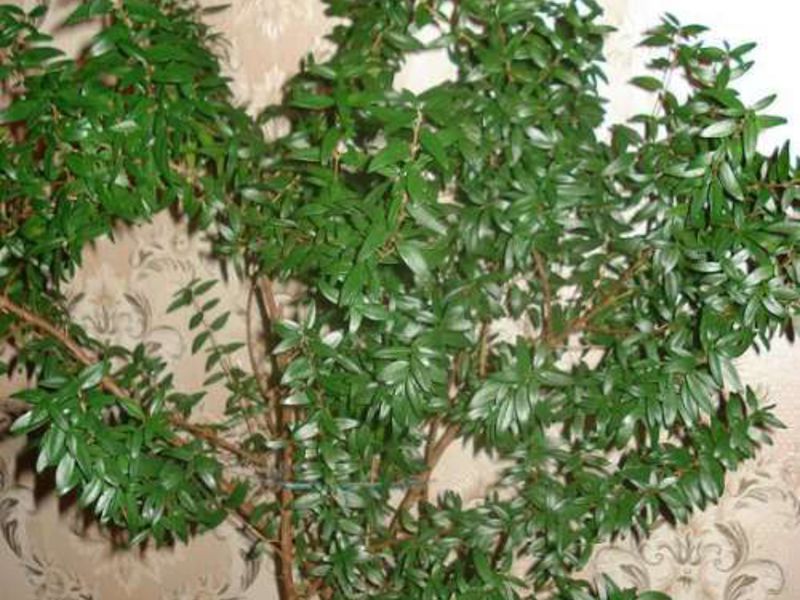
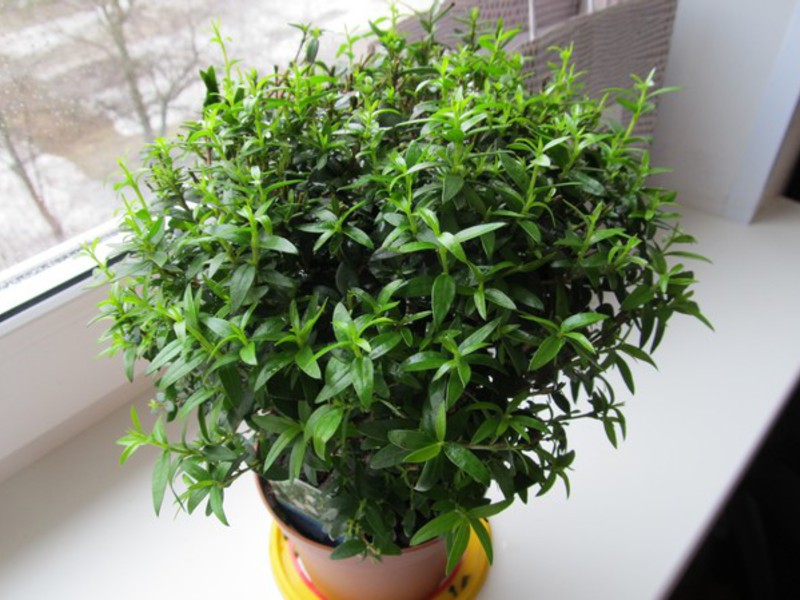
During pruning, the myrtle is fed with chlorine-free fertilizer for indoor plants.
Features of the reproduction of myrtle
Myrtle is propagated by seeds and cuttings. To preserve the maternal characteristics of the plant, it is best to do this using cuttings. At the same time, the soil must have a temperature of at least 25 degrees... Cuttings are carried out in winter or in the middle of summer as follows:
- cut the stalk up to 9 cm long from the side shoot;
- remove the lower leaves, and treat the cut with Kornevin;
- we plant the cuttings in sandy peat soil;
- cover with glass or film on top;
- leave to take root for 2-3 weeks;
- we plant the cuttings in separate pots.
The second way of plant propagation, seed, has a key flaw - varietal characteristics cannot be preserved in their original form. It also takes a long time to grow.
Sowing seeds is carried out in early spring. They are planted in a sandy peat substrate, then covered with soil. Then rcover with glass or foil, and in the room they make diffused lighting and a temperature of about 21 degrees.
After a couple of weeks, the first shoots appear. Myrtles are planted in separate containers when at least 4 leaves appear.
When growing a plant from seeds, a crown must be formed, therefore, the sprout must be pinched at the desired height.
How to transplant a myrtle tree?
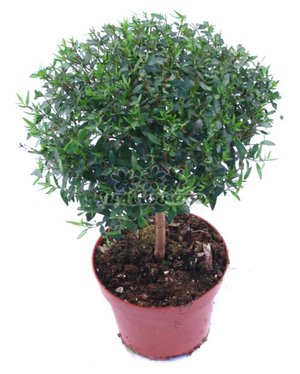 Myrtle does not grow too quickly, so it is often not necessary to transplant it. However, if necessary, this should be done when it becomes cramped in the pot. A transplant is recommended no more than once every three years.... This is best done in winter.
Myrtle does not grow too quickly, so it is often not necessary to transplant it. However, if necessary, this should be done when it becomes cramped in the pot. A transplant is recommended no more than once every three years.... This is best done in winter.
To make it easier to remove the plant from the container, do not water it for several days. Then the tree is carefully taken out, holding it by the trunk.
In order for the roots to take root better, they are treated with a stimulant. Pour the substrate into a pot with drainage and expanded clay, then lay the myrtle, then pour out the soil and level its surface. Water it until water enters the container.... Then the plant is transferred to a darkened place.
Flowering period
Myrtle blooms from early to mid-summer. Its flowers can be simple or double, be in the axils of the leaves separately, or be collected in a brush. Basically, they bloom in the upper most illuminated part.
For flowering to be successful, follow these care rules:
- do not prune myrtle in early spring, it is better to do this after flowering;
- Provide regular airing for the flower.
Diseases and pests
If the soil under the myrtle is poorly drained, then this can provoke the appearance of root rot... Also, with improper care, the plant is exposed to many diseases.
Pests dangerous for myrtle are:
- spider mite;
- thrips;
- shield;
- aphid;
- whitefly.
Inspect the plant regularly for strange rashes or other manifestations. If you find traces of pests, treat the plant with special products.
It is also worth remembering that myrtle leaves contain toxic components, which, if a person has sensitivity, can cause headaches and nausea.
Improper flower care can provoke lethargy and yellowing of the leaves. Make sure that the soil does not dry out, lighting and temperature were always normal, do not let everything take its course. Monitor the frequency of watering and replant the plant on time if necessary.
The rules for caring for myrtle at home are not so complicated. And if you stick to them, your houseplant will give you peace and joy.
